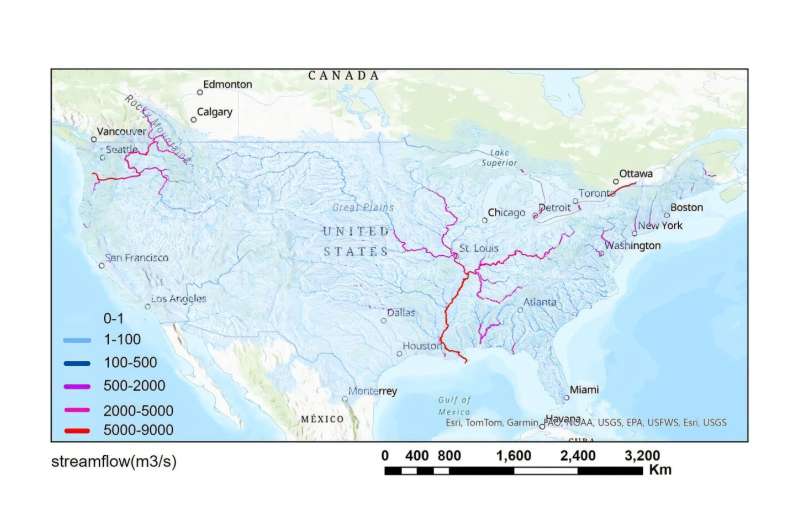Floods remain one of the most destructive natural disasters in the United States, inflicting billions of dollars in damages annually. In a groundbreaking development, a team of researchers from Pennsylvania State University has unveiled a new computational model that promises to significantly improve flood prediction across the continental United States. This model, which integrates artificial intelligence (AI) with traditional hydrologic data, offers unprecedented levels of efficiency and accuracy, according to the researchers.
The new model, termed a high-resolution differentiable hydrologic and routing model, leverages big data and physical readings from river networks, utilizing AI to simulate and predict water movement. Published in the journal Water Resources Research, this innovative approach marks a substantial advancement over existing models such as the National Oceanic and Atmospheric Administration (NOAA)’s National Water Model (NWM).
Revolutionizing Traditional Models
Traditional models like the NWM rely heavily on parameter calibration, a process that involves processing extensive historical streamflow data to set parameters for simulations. This method, while effective, is often inefficient and costly. Chaopeng Shen, a professor of civil and environmental engineering at Penn State and co-author of the study, explained the limitations of traditional models. “To be accurate with this model, traditionally your data needs to be individually calibrated on a site-by-site basis,” Shen said. “This process is time-consuming, expensive, and tedious.”
In contrast, the new model employs neural networks, a subset of AI techniques that recognize complex patterns across large datasets. These networks function similarly to the human brain, forming logical connections and improving over time as they process more data. Yalan Song, assistant research professor and co-author, highlighted the efficiency gains: “By incorporating neural networking, we avoid the site-specific calibration issue and improve the model’s efficiency substantially.”
Integrating AI and Physics-Based Models
While some water models rely solely on machine learning trained on observational data, they often lack the broad physical knowledge needed to accurately predict extreme weather events. Shen emphasized the dangers of such limitations, particularly in the context of increasing weather extremes. “The lack of broad physical knowledge can cause models to downplay the intensity of previously unseen outliers in simulations,” he noted.
The team’s model, however, combines the strengths of both physics-based and machine learning models, enhancing the accuracy of extreme event predictions. Trained on a vast dataset from 2,800 gauge stations across the U.S., the model demonstrated a 30% improvement in streamflow prediction accuracy across 4,000 gauge stations, including those not part of the training data.
Implications for Future Flood Forecasting
According to Shen, their model is a strong candidate for integration into the next generation of NOAA’s National Water Model framework, which aims to elevate flood forecasting standards nationwide. “Once the model is trained, we can generate predictions at unprecedented speed,” Shen explained. “In the past, generating 40 years of high-resolution data through the NWM could take weeks. Now, we can do it on one system, within hours.”
While the model holds promise, Shen acknowledged the need for careful independent evaluations to ensure its accuracy in untrained scenarios. The team is also working to enhance the model’s prediction capability from daily to hourly intervals, which would be instrumental for operational applications like hourly flood watches and warnings.
Broader Applications and Future Research
Beyond flood prediction, the model’s simulations offer valuable insights for predicting other major events such as droughts, with potential implications for water resource management, agriculture, and sustainability research. “Because our model is physically interpretable, it can describe river basin features like soil moisture and groundwater recharge,” Shen explained. “This is very useful for agriculture and much harder for purely data-driven machine learning to produce.”
Looking ahead, the research team, including civil engineering doctoral candidate Leo Lonzarich, aims to develop a framework that other researchers can expand upon, fostering a collaborative approach to solving complex environmental challenges.
As AI continues to revolutionize various sectors, this innovative model represents a significant step forward in the quest for more accurate and efficient flood prediction, promising to enhance our understanding and management of natural water systems.
